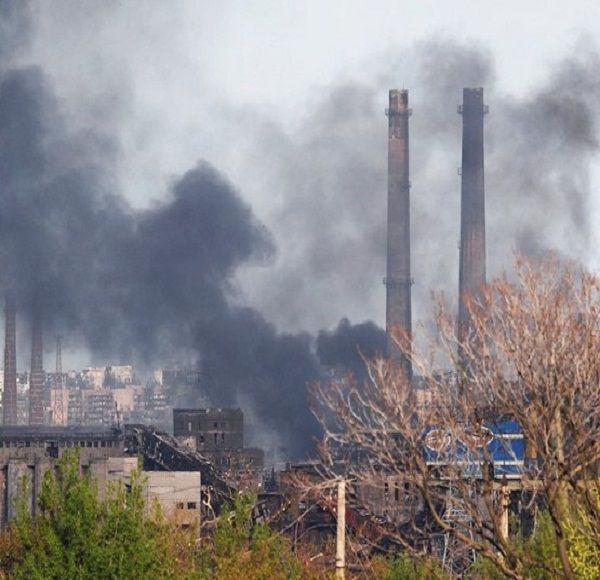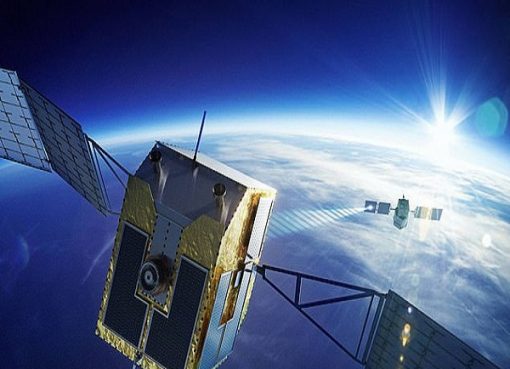The geopolitical implications for net-zero and global energy markets are being felt following Russia’s invasion of Ukraine.
As he said, in marking six months since COP26, there are now more post-invasion supply chain worries.
Some further threaten food security. In May, the United Nations Food and Agriculture Organisation estimated that 25m tonnes of Ukrainian grain could not be exported because of Russian port blockades and damaged infrastructure. It says famines are a risk, so western countries are looking to free up those supplies quickly. Major powers are also acting in broad unison to support Kyiv militarily, though with materials, not forces.
For energy, the response has been more fragmented – perhaps dangerously so.
Energy sales are critical to the Kremlin’s ability to fund its war. The UK and US have banned imports of its gas, oil and coal by the year-end, but they are smaller customers. The US is mostly energy self-sufficient. The UK has relied on Russia for just five per cent of imports.
The European Union (EU) can exert greater economic pressure on Vladimir Putin’s regime. Russia provided 40 per cent of EU gas imports in 2021: around 150bcm. In its post-invasion RePowerEU plan, the bloc proposes steps to reduce this and end Russia’s use of energy as geopolitical leverage.
The immediate goal is a two-thirds cut in those imports by December. It will partly be achieved by buying an extra 50bcm of liquified natural gas (LNG) this year from providers such as the US (which has agreed to supply 15bcm), Qatar and Nigeria, rising to 60bcm in 2023.
This sounds good, but the LNG market is already at or near capacity. LNG prices, measured in millions of metric British thermal units, increased fivefold in 2021 from $6 (£4.82) to around $30/mmBtu (£24.12). They have risen to between $30 and $38 since the invasion.
Hikes began partly because of industry’s post-Covid return, Russia’s earlier decision to supply only contracted gas to Europe and refuse one-off ‘spot’ requests and 2021’s harsh winter. Resulting inflation already left some countries, notably developing ones, struggling to secure deliveries.
Other supply chain fears are growing. The EU and the UK, in its British Energy Security Strategy, want to progressively displace fossil fuels, but suppliers of alternatives are raising flags about materials shortages and costs.
Steel is the bellwether. Focus Economics says the European price reached $1,476 per metric tonne in April, up 17 per cent on the month before and 47 per cent year-on-year.
The continent has been reducing Russian steel imports, but one of the main alternatives it has turned to is Ukraine, one of the world’s five leading exporters. As the battle for the Azovstal steelworks in Mariupol highlighted, Ukrainian steel shipments are suffering serious disruption. The EU is suspending tariffs on them to support Kyiv economically, but as with wheat the logistics are hard.
There are other materials of concern where Russia remains a major source. They include aluminium, palladium, copper, nickel, cobalt, lithium and rare earths. The war is driving inflation in net-zero markets beyond energy generation, such as consumer electronics and electric vehicles. Sven Utermöhlen, CEO of Offshore Wind at RWE Renewables, has also cited rising prices for cast iron turbine parts.
Shortages are not new. Vestas, the largest wind turbine manufacturer, raised it in 2021 results. A write-down on a decision to quit the Russian market pushed the company into a loss in its 2022 first quarter, but “highly disrupted supply chains” still cloud financial prospects, according to CEO Henrik Andersen.
An ongoing factor is China’s zero-Covid policy. A current swathe of lockdowns in large mining and industrial regions is again constricting key exports. In solar, China is the largest panel manufacturer and the European Statistical Office estimates it accounts for 75 per cent of local installations.
The war in Ukraine is nevertheless making things worse. Understanding the risks involved begins by reviewing the post-invasion energy initiatives from the UK and EU.
The UK has its British Energy Security Strategy. The EU has RePowerEU. They are full of ambition, but still being fleshed out.
The UK also unveiled a mix of ‘big bets’, led by 50GW of offshore wind capacity by 2030 up from a previously planned 40GW and 16GW today. Eight new nuclear projects will be reviewed, and hopefully built, so the sector meets 25 per cent of UK needs by 2050 at 24GW. Solar installations could be ramped to a “potential” 70GW by 2035. And 10GW of ‘blue’ and ‘green’ hydrogen will be added by 2030.
The UK will then continue to eke out North Sea gas reserves. It emerged alongside the strategy that Business Secretary Kwasi Kwarteng has contacted owners of three coal-fired power stations – EDF at West Burton, Drax at North Yorkshire and Uniper at Ratcliffe – to see if they can delay closure plans so they are available as contingencies.
RePowerEU has necessarily shorter-term horizons. By reducing Russian gas supplies and getting gas storage to 80 per cent of capacity across the bloc by Autumn, it aims to mitigate supply crunches and rises to consumers’ bills.
In the medium-to-long term, RePowerEU’s overarching goal is to accelerate the EU’s ‘European Green Deal’ and ‘Fit for 55’ programmes. These seek to make its market carbon-neutral largely through wind and solar renewables and increased use of hydrogen and biomethane.
RePowerEU earmarks an extra 80GW in solar and wind over previous plans and the displacement of 38.5bcm of Russian gas through efficiency measures, heat pumps and electrification. The European Commission plans to offer €225bn (£190bn) in loans and €75bn in grants to seed renewables projects.
An important common ground in the UK and EU proposals is ‘permitting’. This is a long-standing bugbear for non-hydrocarbon suppliers.
Giles Dickson, CEO of Wind Europe, said in February, days before Putin mobilised his troops: “Land is not the issue. Finance is not the issue. Technology is not the issue. Public opinion is not the issue. It is the sheer complexity of the permitting procedure.” What Dickson said for wind goes for solar and nuclear.
For nuclear, a core investment enabler for Rolls Royce’s plan to build small modular reactors – an initiative considered fundamental to the UK’s strategy – involves transforming permitting from a process made up of multiple sequential steps into one where as many as possible are taken simultaneously. It is working with Whitehall towards this.
The UK wants to cut renewables permitting from four years to just one. The EU’s wants to cut it from between six and nine years to also one. Solar, wind and nuclear are getting much of what they have asked for, but want to know more. These are nevertheless bigger bets with implications for today and tomorrow.
The good news is that they show politicians taking energy transition even more seriously, albeit prompted by a regional war rather than scientific warnings. The bad news, potentially, is that these bets could strain supply chains and have unintended geopolitical consequences. They appear to have been drafted with little reference to – or hedge against – a transforming energy ecosystem.
What are the odds on achieving them? LNG is the main short-term replacement for Russian gas imports. The UK contracts for most of its LNG (14bcm) elsewhere though it is excluded from the immediate ban on Russian imports. The EU needs that extra 50-60bcm.
Time to get out the back of an envelope. The International Energy Agency (IEA) estimates the global LNG trade was equivalent to around 500bcm in 2021. It could have been higher but Covid-19 disruptions and other terminal outages removed about 9 per cent of capacity, according to Standard & Poor.
LNG supplies are tight with terminals at or close to capacity. Hence price inflation, refusals of spot orders and even cancellations of contracted deliveries.
Pakistan is understood to have suffered multiple defaults before the invasion of Ukraine. Suppliers swallowed 30 per cent top-up penalties on refunds because LNG prices had risen to where it remained more profitable to serve higher-paying spot customers. Other developing countries in Asia with an appetite for LNG include Thailand and India, but the biggest importers are two more mature economies: Japan and South Korea.
By his analysis, an extra 166.8bcm of LNG terminal capacity will be added between now and 2026, but 29.1bcm of that will come from Russia and another 28.6bcm from “wild card” projects in Nigeria and Mozambique. That leaves 109bcm of “new supply we can count on”.
“China’s annual LNG growth is 14bcm. In five years, that soaks up much of the growth in LNG (5 x 14 equals 70bcm). You have 39bcm left. So when [the EU] says, ‘We want 50bcm in LNG by 2030,’ that’s huge,” Tsafos observed. “PS: [that] excludes UK and Turkey, one quarter of the European LNG market.”
For Tsafos, this raises the threat of greater inflation and shut-outs, leading to wider destabilisation.
“In effect, Europe wants to buy all the LNG that China isn’t buying. Zero for anyone else. And no buffer (drought, accident, etc). It’s a precarious situation that will push prices very high and impose massive costs, especially on emerging economies,” he added.
To that end, the European Commission has established an all-member-state procurement platform to maximise its negotiating power – but at whose expense?
LNG terminal projects announced today will take time to increase capacity. Recent US schemes, like the new Calcasieu Pass terminal in Louisiana, entered operation earlier than expected. Commissioning typically takes four years.
If emerging economies cannot access LNG at viable prices, what then? Will they continue to burn coal? Might they turn to Russia, thus reducing the punitive impact of the West’s response? Worst of all, could the tragedies Alok Sharma described begin to occur on an even greater scale?
Samuel Leupold is the former CEO of offshore specialist Ørsted Wind Power and current chair of Wind Energy at the Macquarie Green Investment Group. Surveying supply chain effects facing his sector at April’s WindEurope conference, he reached a gloomy conclusion.
“The world is increasingly going to be, from a geopolitical perspective, distinguished between haves and have-nots in transition materials,” he said.
The EU has sanctioned Russian steel and iron, but the country supplies other key raw materials used in renewables.
For aluminium, it represents 11 per cent of global exports; in copper, it represents four per cent of global output, and in palladium and platinum, around 10 per cent. Pre-invasion, it planned to raise its share of rare earths exports from two to 10 per cent to meet growing demand from renewables and other technology markets.
These numbers worry promoters, as do tightening availability and rising prices. One refrain is that fluctuating data is promoting uncertainty around upcoming national auctions for renewables projects.
The EU and UK want to increase auction frequency to meet increased targets and shortened timetables, from biannual to annual in the UK’s case.
Auctions are increasingly based on contracts for difference. These settle a ‘strike’ price for supplies. If the cost drops under this strike price over the term, the government pays the supplier the difference and vice versa if it goes over it. The model is seen as managing costs and making it easier for promoters to attract investors.
Faced with materials challenges, energy companies say they are struggling to calculate strike bids because of volatility around construction costs and delivery prices. They propose linking strikes to inflation. Politicians, however, are resisting the idea because it could result in further sharp increases to consumers’ bills. The EU has recently proposed its €300bn package of mostly loans to reinvigorate the market. Whether this will assuage bidders’ concerns remains to be seen.
There is an argument that the Commission should have seen this coming. It published research on raw materials supplies for wind and solar two years ago. This said that for the high-demand scenarios since tabled, demand for structural materials such as steel in wind turbines could increase by between 11 and 12 times and for solar installations by up to 21 times.
It also noted that EU requirements alone could consume the global capacity in rare earths such as neodymium, praseodymium, dysprosium and terbium. The report called for “additional studies,” but the warning was there.
The possible consequences of slowed delivery in renewables and nuclear echo those for LNG. Shortages in both non-Russian global gas supply and non-hydrocarbon alternatives could prolong European dependency on Russia. Alternatively, inflation could price developing nations out of both gas and renewables, leading them again to turn back to coal or suffer destabilising social and economic consequences. Between Scylla and Charybdis.
Even Europe, the leader on 1.5°C, could see the target slip.
A short-term return to the scale of Russian exports is unthinkable. Even if Putin’s regime falls, Europe will not leave itself exposed again. Yet progress on decoupling is only beginning.
By mid-May, the Centre for Research on Energy and Clean Air (CREA) estimated the EU had bought €51bn of Russian energy since the invasion began on February 24. Commission President Ursula von der Leyen said gas imports had fallen from 40 to 26 per cent by April but the spend is still €50m daily. “So, it’s going in the right direction, but we have to accelerate,” she acknowledged.
As atrocities continue, Moscow’s reserves – boosted by exports – reached €360bn in April, according to Robin Brooks, chief economist at the Institute of International Finance. Between 2007 and 2021, they averaged €6.4bn. Russia is bleeding cash. Estimates for the cost of the invasion range from $900m to $20bn a day. These are ugly numbers.
This may make the UK and EU decisions to address challenges quickly, with scant regard for wider geopolitical consequences, more understandable. While Europe appreciates how Ukraine and net zero are entwined, it seems to have lost sight of the context.
For Nikos Tsafos, one step on LNG would be for the EU to open dialogue across Asia, particularly its emerging economies, on sourcing alternative gas while reducing the impact on other importers. So far, the procurement platform within RePowerEU officially plans discussions only with suppliers. Countries could also review their LNG needs in light of alternatives being put forward.
An analysis of RePowerEU by four consultancies – Bellona Europa, E3G, Ember, and RAP – proposes capping LNG at 51bcm rather than 60bcm and installing an extra 158GW rather than 80GW in solar and wind to compensate.
A 10-point IEA proposal caps gas at 30bcm. However, that requires restarting offline nuclear power stations and delaying five closures scheduled this year and next. Germany’s coalition government – including the Green Party – would reject this.
The UK has opted to chart its own course. Brexiteers say this has allowed it to be nimbler in its energy mix. The more sceptical say it carries risks. The UK is outside the EU’s LNG purchasing scheme. This could lead to it being less competitive on volume and price in bidding, according to the UK Energy Research Council.
It may then find it has less scope to influence what needs to be a global energy rethink after Ukraine, compared to the EU and US. The UK cannot escape energy price inflation, even if its links to Russian supplies are modest.
Securing the supply chain around raw materials also needs greater global cooperation and coordination. This flaw is common to the EU and UK strategies.
Isolation in a net-zero world is unsustainable. The tone of Sharma’s speech deliberately cast climate change as a global issue to reflect that.
“When countries meet [for COP27] in Egypt in six months’ time,” he said, “they must show a global audience that the confidence we inspired in the international system was not misplaced, that though the world has changed, our resolve has not, and that the historic agreement forged in this ‘Dear Green Place’ is taking the world towards a cleaner, safer and more prosperous future.”
Source: E&T










